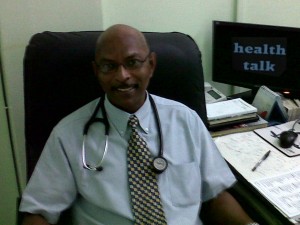
Many of us enjoy a good sleep. We look forward to the night time, which is when most of us get our beauty rest. Or we can’t wait for the weekends when there’s no work (or school), and our bed or sofa becomes our best friend.
But you can’t really enjoy sleep, can you? What you enjoy is how you feel after you’ve had it. Because you can’t experience any emotion or pleasurable conscious sensation when you’re sleeping. It’s as if you’re dead.
Now can you imagine being dead, literally, hundreds of times in a night? Well, not really. Let’s say you actually stop breathing that many times. We tend to think that not being able to draw a breath is synonymous with death.
Sleep apnea is actually when you stop breathing during your sleep. Frightening, isn’t it. Fortunately it’s not a major killer by itself, but the thought of not breathing in your sleep and possibly dying that way is quite an unpleasant thought.
Let me help you know the dangers and how not to fall for myths about the disorder. That it is just a snoring problem is one of these myths. In fact, let’s put this in its own category.
Myth. Although snoring can be a sign of sleep apnea, there’s a big difference between the two. People with sleep apnea actually stop breathing up to 400 times throughout the night. These interruptions last 10 to 30 seconds and are often followed by a snort when breathing resumes. This breaks your sleep cycle and can leave you tired during the next day.
Sleep Apnea in Not Dangerous
Myth. All those interruptions take a toll on the body and mind. Untreated sleep apnea has been linked to job related injuries, car accidents, heart attacks, and strokes.
Sleep Apnea Blocks Your Breath
Fact. The most common type of sleep apnea is obstructive sleep apnea or OSA. It happens when your tongue, tonsils, or other tissues in the back of the throat block the airway. When you try to breathe in, the air can’t get through. Central sleep apnea is less common than OSA. Central sleep apnea means the brain doesn’t always signal the body to breathe when it should.
Only the Old Get Sleep Apnea
Myth. It is estimated that many millions of people world wide have OSA, 12 million in the United States alone. It’s more common after age 40, but the disorder can affect people of all ages. You’re more likely to develop OSA is you are overweight, male, black or Latino. The condition also tends to run in families.
Alcohol Will Help You Sleep
Myth. A night cap may make you drowsy, but it does not promote good quality sleep. Alcohol relaxes the muscles in the back of the throat. This makes it easier for the airway to become blocked in people with OSA. Sleeping pills have the same effect.
Sleep Apnea is Rare in Kids
Myth. OSA is actually more common in children, affecting as many as one in 10. In most cases, the symptoms are mild, and the child eventually outgrows the condition. But some children may develop behavioral issues or serious medical problems as a result of OSA.
Losing Weight Can Help
Fact. You may be able to improve OSA by making some changes in your life. If you’re overweight, talk to your doctor about starting a weight loss program. Shedding even a small percentage of your body weight can improve your symptoms. If you smoke, ask your doctor about products that can help you quit.
Lying on Your Side Can Help
Fact. If you sleep on your back, gravity can pull tissues on your throat down, where they’re more likely to block your airway. Sleeping on your side instead may help open the throat. There are special pillows to help keep you on your side. Some people even use shirts with tennis balls sewn to the back.
A Mouthpiece Works for Some
Fact. A dentist or orthodontist can specially make a mouthpiece or oral appliance to ease mild sleep apnea. The mouthpiece is custom made for the individual and adjusts the position of the lower jaw and tongue. You put it in at bedtime to help keep your airway open while your sleep.
CPAP is Effective Treatment
Fact. CPAP stands of continuous positive airway pressure. A CPAP machine blows a steady stream of air into the airway. The flow or air is adjusted until it’s strong enough to keep the airway open while you sleep. CPAP is the most common treatment for adults with moderate to severe OSA.
Try Surgery is Nothing Else Works
Myth. In some patients, surgery may be able to cure OSA. A good example is a child with large tonsils that block the airway. Removing tonsils can often provide a solution. In adults, surgery may improve symptoms by shrinking or stiffening floppy tissues. But this is not an option for everyone. Patients should consider the pros and cons and their doctor’s opinion before going forward with a surgical procedure.
Sleep well tonight, and the rest of the week.
See you next week.

Well done doc. As usual your right on course. Thanks.
Very informative and enlightening doc. Keep up the good work by continuing to inform us all on those key conditions.
informative. i agree with you jungle king/delices
and the balance of Donkeys wont comment/contribute to such educational discussions though…..its not a rowrow or some political!!!! very interesting/informative/educational topic, i must say.. Dominicans lets learn !!!!!!
very informative.
I understood in the Cpap Machine their is a small tank of water. What is the purpose of the water and should the water in the tank cold or warm, rather which is the best form to use.